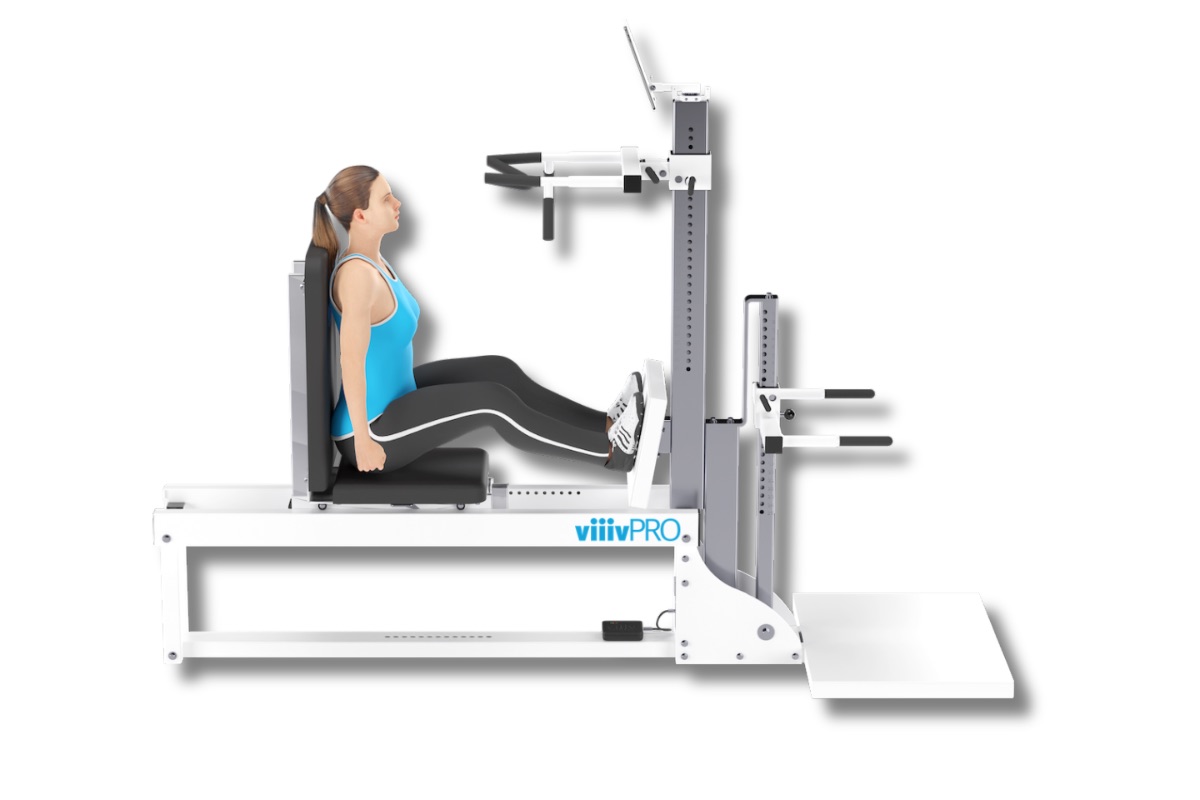LOAD YOUR BRAIN - The Best Thigh Workout
I recently saw a short clip of an interview on Instagram with Steven Kotler.
Mr. Kotler is a New York Times best-selling author, award-winning journalist, and Executive Director of the Flow Research Collective.
The subject of this conversation was the relationship between thigh strength and mortality.
Here's what he said:
"The stronger your thighs are, the longer you live. The single most important thing you can do, the thing with the greatest correlate for preserving brain health and body health, is leg strength. Thigh muscle mass inversely correlates with mortality."
Now, most will hear this and think that repetitions of lunges, leg presses, and squats are the way to go, and that may be good enough.
However, the statement above is superficial and backwards in my opinion.
It's not about making your legs stronger to preserve brain health.
It's about loading your brain to preserve the strength of your entire body.
Right now I'm going to prove to you, beyond any doubt, just a few seconds of isometric effort is the single most important thing every person can do for the quality of their longevity.
I've been looking for a reason to bring this up again and here's a good time.
Back in May 2021, I wrote an article titled "THIS COULD CHANGE THE WORLD."
In that article I referenced a New York Times article titled "How We Get Stronger" that explored the findings of a paper by Drs. Glover and Baker published in the Journal of Neuroscience titled "Cortical, Corticospinal, and Reticulospinal Contributions to Strength Training."
This first-of-its-kind study was incredibly significant, and yet, to this day I am still amazed that no one has ever talked about it and the implications it has for not only revolutionizing how we approach physical fitness, but how we can provide everyone a simple, sustainable gateway into greater physical capacity and better health.
Let's quickly revisit the study.
As monkeys trained 5 times a week for 3 months with their right arm only, implanted transmitters and electrodes allowed researchers to track how each set of nerves responded and changed.
The load was increased until they could do the equivalent of "a human doing 50 one-armed pull ups," said lead author Isabel Glover.
What drove the impressive gain in strength?
Progressively stronger and more urgent nerve commands to the muscles.
But those messages came from, and strengthened only the Reticulospinal Tract (RST) of nerves.
"Strength isn't just about muscle mass," said Dr. Glover, "You get stronger because neural input to your muscles increases."
If you still believe the lie that the first few weeks of strength training is neural, then after that it's all about the muscles getting stronger, please rethink your position.
It's ALL neural, ALL the time.
The RST is a primitive set of nerves with the largest density of projections into the trunk, upper arms, and thighs on both sides of the body.
It is an integrator of whole body movement and often engages everything at the same time when one important factor is present:
The load needs to be high.
This is undeniable proof why just a few seconds of isometric effort is so effective; the highest loads possible can be created.
It's not about how much load you can move, it's about how much load your central nervous system can create against something that doesn't move.
Remember, the monkeys only lifted with their right arm. The left arm was immobilized, and guess what happened?
Their spinal circuits adapted to demonstrate a greater output on their left side as well, with significant changes in both the gray and white matter on both sides of the spinal cord.
But...(and here's even more undeniable proof), the highest load lifted is what produced the greatest activation of not only all muscles in the right arm, but muscles in the left arm that did nothing!
Lighter loads didn't have any effect on the immobilized left arm.
In other words, many repetitions of anything will not get the job done completely.
When the load is high, you can't turn off any part of this tract of nerves.
I've watched many people give a maximum effort pushing with their arms and I see their thighs straighten at the same time.
This is why I always encourage clients with injured limbs to come in and push with their good arm, or their good leg, because I know it will keep the injured limb stronger and larger during disuse which will help reduce rehabilitation time on the back end.
This is just another reason why isometrics should be prescribed post surgery for a healthy limb during the healing process, instead of waiting for physical therapy on the injured limb to commence.
Oh, and one more thing:
Since the RST is primitive, it does not speak. It does not understand language. It changes by way of sensory input.
So it doesn't matter how eloquently you coach a client. Once that person starts to give their best effort pushing or pulling, "it's pure lizard brain stuff" as I tell my clients. Thinking does you no good.
How does all this relate to the statement from Mr. Kotler?
Look, I know the science shows that stronger thighs correlates with living longer, but let's think bigger and broader.
Let's leverage the function of the part of our brain that drives large increases in strength to get even more benefit that will greatly increase the quality of a longer life.
This approach with the viiivPRO can literally change the world.
